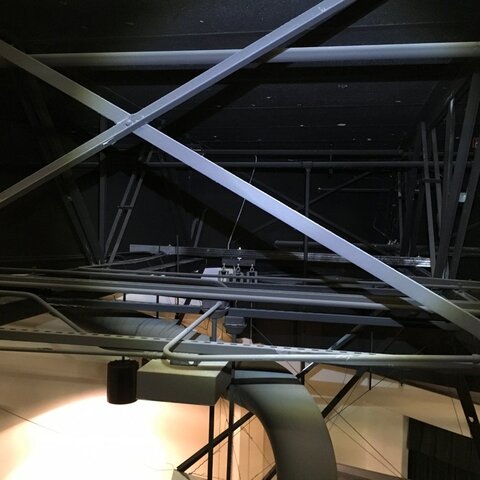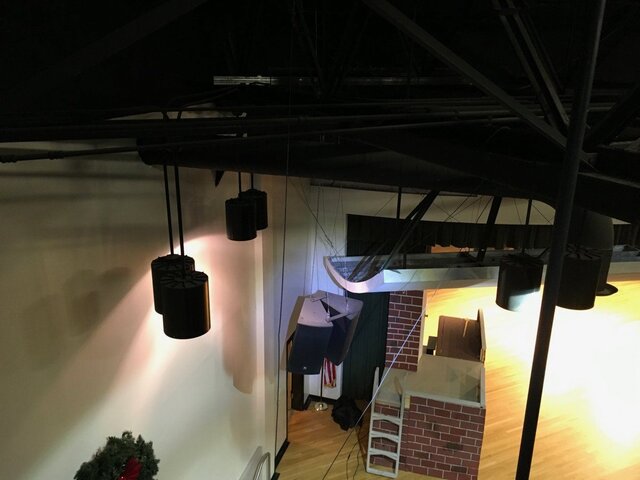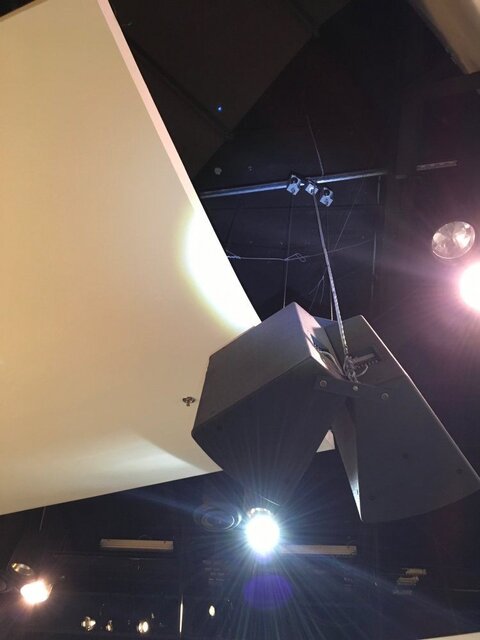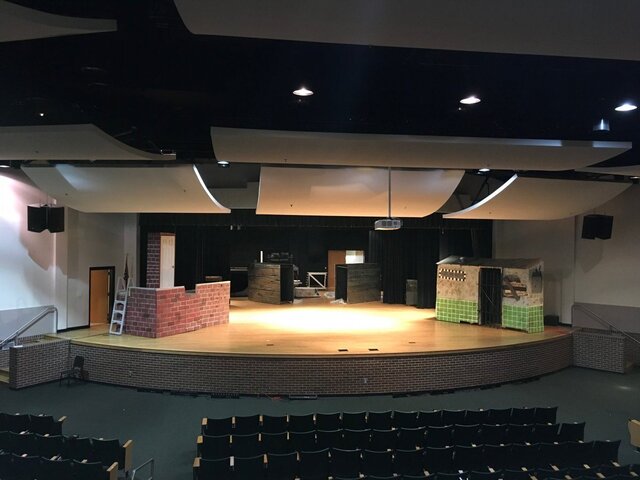dpak
Active Member
Long story short, we may have to adjust the placement of our auditorium speakers due to feedback. A sound pro has talked to some one else at school, but I have not had a chance to talk to that guy yet.
Here's my concern -if we have to adjust the placement of the speakers, either by rotating the assembly on the top (from the first pic, it looks like that could be done) or by completely re-hanging them, should I be nervous about district maintenance people doing the work? Maybe this is something easy that competent facilities people can safely handle, but my instinct is that I need to get both a sound pro and a rigging company to work together to take care of this.
Any thoughts?



Here's my concern -if we have to adjust the placement of the speakers, either by rotating the assembly on the top (from the first pic, it looks like that could be done) or by completely re-hanging them, should I be nervous about district maintenance people doing the work? Maybe this is something easy that competent facilities people can safely handle, but my instinct is that I need to get both a sound pro and a rigging company to work together to take care of this.
Any thoughts?






